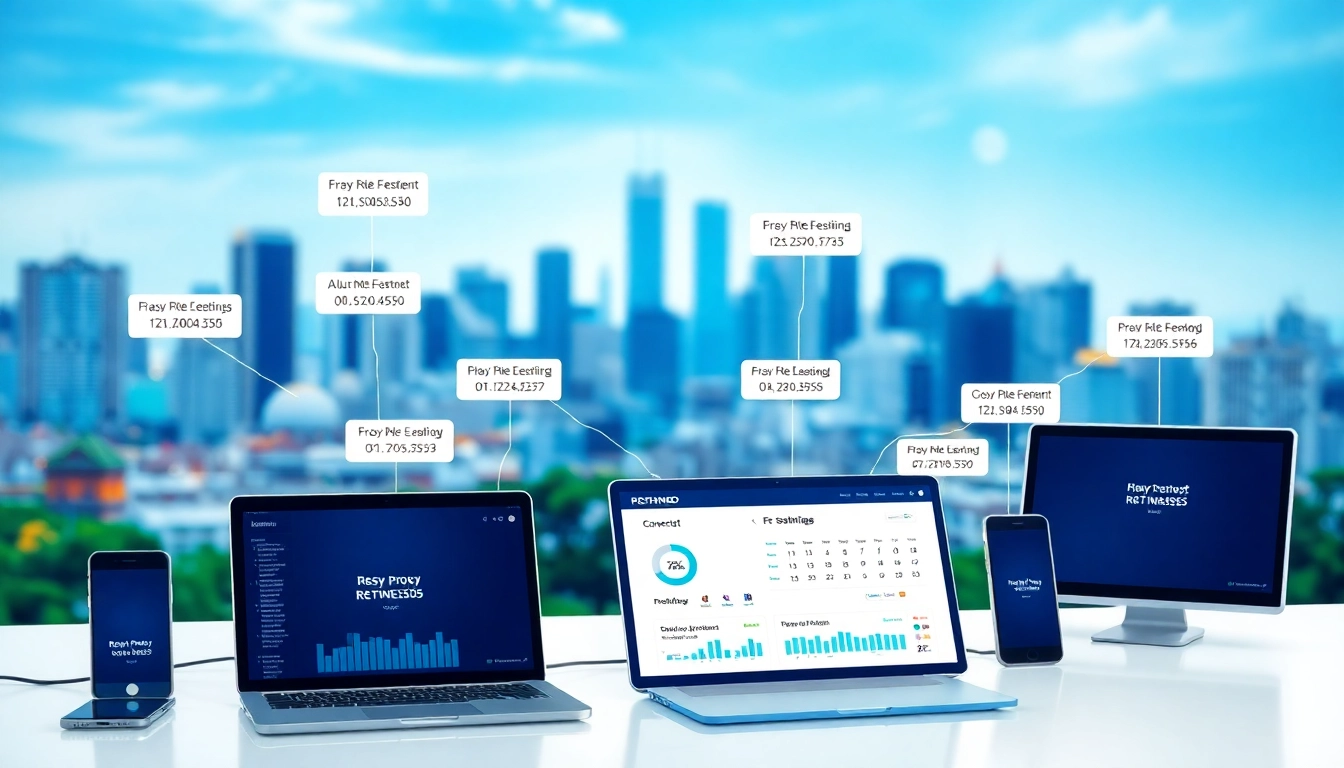Understanding Gamification as a Service
What is Gamification?
Gamification is the application of game-design elements and principles in non-game contexts to enhance user engagement, motivation, and participation. By integrating aspects such as points, badges, leaderboards, and challenges into various platforms and applications, businesses can create interactive experiences that resonate with users on a deeper level. This transformative approach has gained traction across numerous fields, allowing organizations to foster competitive spirit and sustained interest in products or services.
At its core, gamification leverages psychological motivators to influence behavior. Techniques from gaming, such as reward systems for specific actions or creating a scenario for users to participate in, make mundane tasks feel more engaging and less like chores. For instance, a study by the gamification as a service sector shows that integrating game-like features can increase user interaction by up to 50% in various applications, ranging from educational platforms to corporate training environments.
Key Benefits of Gamification as a Service
Gamification as a Service (GaaS) takes the principles of gamification and packages them in a modular service offering that businesses can easily adopt without requiring in-house resources. Here are some of the key benefits:
- Enhanced Engagement: GaaS solutions create a more interactive experience, encouraging users to participate actively rather than passively consuming content.
- Increased Retention Rates: By rewarding users for their activities through gamified elements, businesses can improve customer loyalty and retention. Studies have shown that gamification can reduce churn rates significantly.
- Streamlined Implementation: By using pre-built gamification platforms, organizations can integrate gamified elements into their existing workflows swiftly and efficiently, reducing development costs and lead times.
- Versatility Across Industries: GaaS can be tailored to fit various sectors, including e-learning, employee training, healthcare, customer engagement, and marketing.
- Data-Driven Insights: Integrated analytics tools within GaaS platforms allow businesses to track user engagement metrics and optimize their strategies based on real-time data.
Types of Gamification Solutions
There are several types of gamification solutions available, each catering to different aspects of user engagement:
- Point Systems: Users earn points for completing tasks or achieving specific milestones. This system is common in educational apps and employee productivity platforms.
- Leaderboards: By showcasing user rankings based on their achievements, leaderboards foster a sense of competition, motivating users to engage more deeply.
- Badges and Rewards: Visual representations of achievements, like badges, can incentivize continued participation, encouraging users to strive for recognition.
- Challenges and Missions: These provide specific tasks or goals for users to achieve, making the experience dynamic and goal-oriented.
- Feedback Mechanisms: Instant feedback on user progress helps to maintain motivation and encourages ongoing participation by allowing users to see their growth.
Importance of Gamification for User Engagement
Enhancing Customer Loyalty through Gamification
In today’s competitive market, retaining customers is as crucial as attracting new ones. Gamification allows brands to foster deeper relationships with their customers. By creating enjoyable and rewarding experiences, businesses can significantly improve customer loyalty.
For instance, loyalty programs have evolved into gamified experiences where customers earn points or rewards for their purchases. Brands like Starbucks successfully implement gamification by rewarding customers with stars for every purchase, which can later be redeemed for free items. This not only encourages repeat transactions but also makes customers feel appreciated and valued.
Employee Engagement: How Gamification Drives Results
Employee engagement is crucial in ensuring productivity and reducing turnover. Several organizations now use gamification to improve workplace morale, motivation, and engagement. Offering employees tasks and challenges, along with instant recognition of their achievements, significantly enhances their motivation levels.
For example, companies such as Deloitte utilize gamified platforms to engage employees in training sessions, leading to increased participation and skill acquisition. By turning training into a competitive game, employees are more likely to embrace learning new skills relevant to their roles, ultimately benefiting the organization.
Case Studies: Successful Implementation Examples
Many companies have successfully implemented gamification strategies, yielding notable results:
- Fitbit: The fitness tracker utilizes gamification to motivate users to reach their fitness goals. Users can earn badges for various achievements, share their progress, and compete on leaderboards, making fitness more engaging.
- Duolingo: The language-learning app employs gamification by awarding users points for completing exercises, creating a fun learning environment that increases user retention and progress over time.
- Salesforce: The company incorporates gamification within its training modules, utilizing points, badges, and leaderboards to incentivize employees, enhancing both participation and retention of knowledge.
Designing Effective Gamification Strategies
Choosing the Right Game Mechanics for Your Audience
Understanding your audience is essential when designing a gamification strategy. Tailoring game mechanics to suit their preferences can significantly increase engagement levels. Factors to consider include demographics, motivation triggers, and user behavior patterns.
For instance, a younger audience might resonate more with competitive leaderboards and badges, while a professional audience may prefer point systems and structured feedback. Conducting user research before implementation will provide valuable insights that can guide your strategy.
Aligning Gamification with Business Objectives
Successful gamification aligns with broader business goals. It’s crucial to understand how gamification will fit within the existing strategy and the desired outcomes. Whether the aim is to boost customer engagement, enhance employee productivity, or increase user retention, establishing clear objectives allows for more focused and measurable outcomes.
When launching a gamified platform, businesses should consider KPIs that directly correspond to their goals, allowing them to adjust strategies in real-time based on user engagement levels.
Common Challenges and How to Overcome Them
While gamification offers numerous benefits, some challenges may arise during implementation:
- User Disengagement: If not carefully designed, gamified elements can become tedious. Regularly updating challenges and rewards keeps users engaged.
- Lack of Clear Objectives: Without defined objectives, it is easy for the gamification strategy to become disjointed or ineffective. Establishing clear goals at the outset can help maintain focus.
- Overemphasis on Competition: While competition can drive engagement, it may alienate users who prefer collaboration. Balancing competitive and cooperative elements can yield better results.
Measuring the Impact of Gamification as a Service
Key Performance Indicators for Success
Evaluating the success of a gamified platform is essential to understand its effectiveness and areas for improvement. Key metrics to consider include:
- Engagement Rates: Analyze user interactions, such as time spent on the platform and frequency of participation.
- Retention Rates: Assess how gamification impacts the rate of returning users and customer loyalty.
- Conversion Rates: Measure how gamification influences user actions, such as upgrades or additional purchases.
- User Feedback: Conduct surveys to gather insights on user experiences and perceived value from gamified elements.
Tools for Monitoring Engagement and Outcomes
Utilizing analytics tools is vital for monitoring engagement and understanding user behavior patterns. Platforms such as Google Analytics, Mixpanel, or specialized gamification software provide useful insights that inform adjustments to gamification strategies.
Setting up dashboards to visualize data helps stakeholders quickly identify trends and opportunities for enhancement. Ensuring regular review cycles based on collected data will facilitate continuous improvement and optimal user experiences.
Iterating Your Gamification Strategy for Improvement
Gamification is not a set-it-and-forget-it solution. Continuous iteration based on user feedback and performance metrics is essential. Regularly revisiting the gamification strategy will allow businesses to adapt to changing user preferences and industry developments.
Conducting A/B testing on different game elements can help identify what works best for your audience, helping refine the user experience further. Engaging users in the iterative process through surveys can also yield valuable insights into their desires and needs.
Future Trends in Gamification as a Service
The Rise of AI in Gamification Experiences
Artificial Intelligence (AI) is set to revolutionize gamification strategies. By leveraging AI, businesses can personalize gamified experiences, tailoring challenges and rewards to individual user preferences and behaviors. This adaptive approach enhances engagement by providing more relevant and meaningful interactions.
Furthermore, AI can analyze vast amounts of data to uncover patterns that inform the gamification design process. By offering insights into user behaviors on an unprecedented scale, companies can predict future trends and adjust their strategies accordingly.
Cross-Industry Applications of Gamification
The versatility of gamification has enabled its application across various industries. From education to healthcare to finance, organizations are adopting gamification strategies to enhance user experiences and motivate behavior change. Examples include:
- Healthcare: Gamified platforms encourage patients to adhere to treatment plans by rewarding healthy behaviors, such as medication compliance and exercise.
- Education: Educational institutions are embracing gamification to foster student engagement, incorporating elements such as quizzes and progress tracking.
- Marketing: Brands can leverage gamification for targeted advertising campaigns, engaging users through interactive and rewarding experiences.
How Gamification Will Shape Business in the Next Decade
As technology continues to evolve, so too will the strategies behind gamification. Emerging technologies like augmented reality (AR) and virtual reality (VR) will allow for even more immersive gamified experiences. Imagine consumers trying on clothes virtually or students exploring historical sites through interactive VR challenges.
Additionally, as consumer expectations shift towards personalized experiences, businesses will need to refine their gamification strategies continually. Expect to see gamified elements increasingly integrated into everyday business interactions, enhancing customer and employee experiences.



